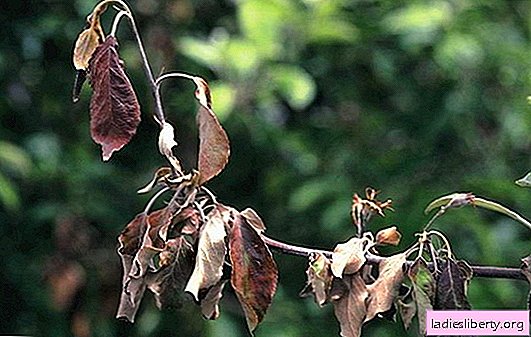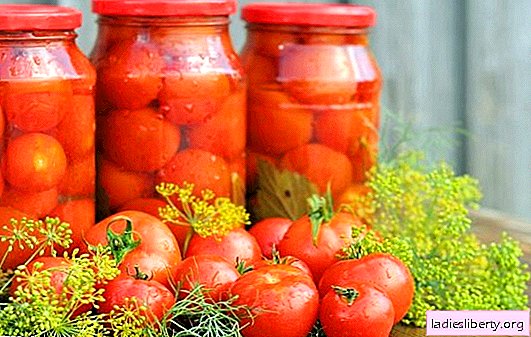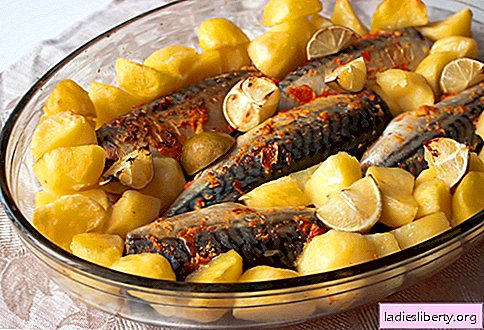
The pear requires special attention and care of the gardener, needs competent care and certain weather conditions.
The climatic conditions of the southern regions are very favorable for growing pear trees.
However, when planting certain varieties and quality care, the pear bears fruit in the more northern regions of the Russian Federation.
But even if all planting and maintenance requirements are met, the pear can deteriorate and dry.
Causes of Pear Drying
The reasons for the drying of the pear can be both weather conditions and pests - insects. It is important to understand that on the same land, trees react differently to the same growth conditions. The general condition of the fruit tree depends on the variety, the age of the seedling, and soil.
Improper care and fit
A pear is more demanding on planting conditions and on caring for it than an apple tree. The best habitat for her is the elevated areas and the upper parts of the slopes. The tree grows well on soils quite loose, permeable to water and air, with low standing groundwater and at the same time quite moisture-resistant. A plot is prepared for planting in the fall, evenly distributing fertilizers over it, and digged. If the soil is acidic add lime. The fruit tree planting pit should be 1m wide and 0.6m deep.

If a pit for planting is prepared in the fall, then the root neck of the seedling should be at the level of the soil, and if in the spring it should be 3-5 cm higher. Subject to the conditions of proper planting and care, the tree grows and bears fruit. However, the pear can also dry out due to exposure of the root neck (the place where the trunk goes to the root). This place can be open from frost when the earth pushes a tree. Another cause of exposure is the improper planting of the pear. If this happens, sprinkle the neck with earth.
Why the pear dries: weather reasons
Pear trees are very susceptible to waterlogging. If small branches begin to dry out on the tree - this is the first sign that indicates a problem with the root system. Of course, with water, plants get the necessary nutrients, but its overabundance is harmful to pears.
In rainy seasons, fruit trees are more prone to such diseases. With excessive moisture in the soil, the air is forced out of it, the root system, deprived of oxygen, begins to decay and gradually dies. First, root hairs die, and then the process of decay passes to thick roots. The crown crumbles, the branches dry and the tree dies. Most often, mature and old pears are subject to this phenomenon, their roots are in the deep layers of the earth and therefore they are more likely than young trees to be soaked in the root system. To prevent this from happening, you need to consider some features when landing:
• it is forbidden to plant fruit trees in those places in the area where clay, crushed stone or sand are under the top layer of soil;
• groundwater should be at least 2 meters from the ground.
Young trees 3-5 years are less susceptible to waterlogging of the soil, because their roots are located close to the surface of the earth. To eliminate overmoistening of the soil, it is necessary to drain it. To do this, add humus or peat to the soil.
It is important not to overdo it, because in excessively sandy or peaty soil, the roots are prone to drying out in the winter. This happens at low temperatures or with sudden fluctuations in temperature: from thaw to frost. To prevent this from happening, experienced gardeners recommend abundant winter watering. The roots are covered with ice crust, which protects them from drying out.
The vitality of trees depends largely on climatic conditions, especially on humidity. With insufficient moisture, the leaves turn black and fall off. If the air is too dry, even abundant watering of the pear does not help, therefore, varieties of pears that are sensitive to dryness must be moistened with a drip.
Why a pear dries: pests and diseases
The mole may also be the culprit for drying the pear. He does not gnaw the roots of trees, but the passages dug by him form voids, the root system, due to the lack of contact with the ground, does not receive mineral and organic substances and begins to dry out. It is easy to detect a mole; the soil around the tree will collapse when walking. There are several ways to deal with harmful animals:
• water the tree abundantly, thereby bringing down the passages and feeding the roots;
• dig into the ground “noise” - devices that produce noise when the wind blows. You can make them yourself, for example, from plastic bottles, cans or buy in a hardware store. Moles do not like to make their burrows in noisy places.
Drying of the pear can also occur due to infection with fungal spores. Such a probability is possible if, during pruning, the instruments were not disinfected with vitriol. Scab first affects the leaves, then the flowers and fruits. Leaves turn black, dry and fall. In this case, you need to cut dry branches evenly and without chipping to a healthy part, lubricate the cut with garden varnish so that air and water do not touch the wound.
Scab is treated with antibiotics by treating the tree and the ground around it. Affected leaves and branches need to be burned so that the infection does not affect neighboring trees.

A bacterial burn can also be a cause of tree disease. Bacterial infection manifests itself in spring or early summer. A tree is infected through cracks or nectaries of flowers. The disease is transmitted as well when pruning through an infected tool. First, the edges of the leaves darken, then the blackness spreads to the entire sheet, they curl and dry.
If a young tree is affected, the disease develops rapidly, tissue death and drying out. Typically, these trees are cut down and burned. If the disease attacks an adult tree, there is a chance of saving it. Abundantly spray leaves and flowers with antibiotics. To avoid the spread of infection in the future when pruning trees, it is necessary to process tools in a solution of boric acid.

The gall mite inflicts great harm. These small insects 0.2 mm long feed on leaf juice. Adult mites hibernate under the scales of the kidneys, where females lay their eggs in spring.
With this disease, the leaves wrap and red swellings appear on them. Heavily damaged by ticks, the leaves turn black, dry out and fall off. A sick tree needs to be treated with an appropriate herbicide or infusions of dandelion, mustard, chamomile. Larvae and ticks must be destroyed on time, as they develop in 2-3 generations, bringing the pear to dry.
Why the pear dries: unknown reasons
What to do if you have tried all methods of controlling the drying of a pear and none of the above reasons is suitable for your particular case?
In such cases, experienced gardeners acknowledge that the pear could not realize its natural potential, was too weak for growth and fruiting. If it is still small - try transplanting it to another place, pour it with Kornevin, spray it with Epin or Zircon and leave it alone.
Perhaps your pear does not like too much attention?











